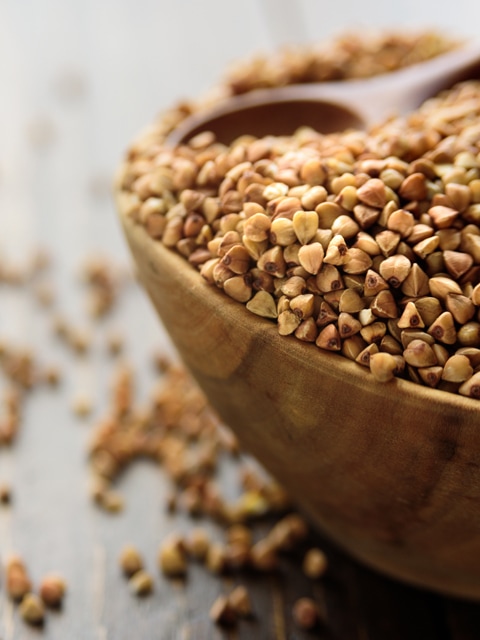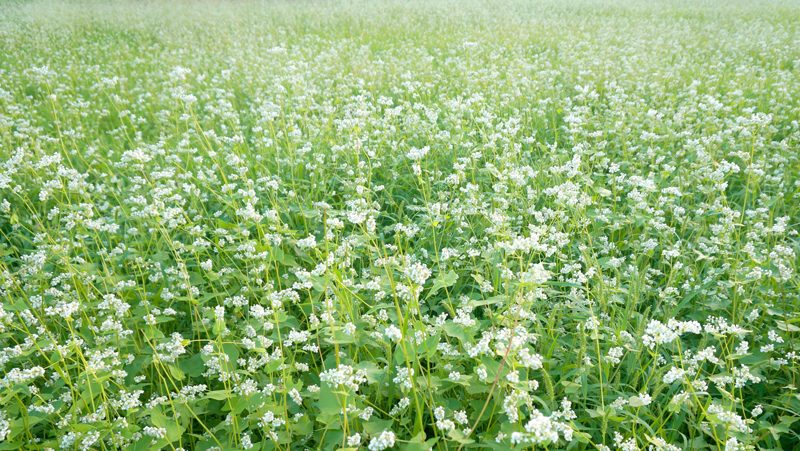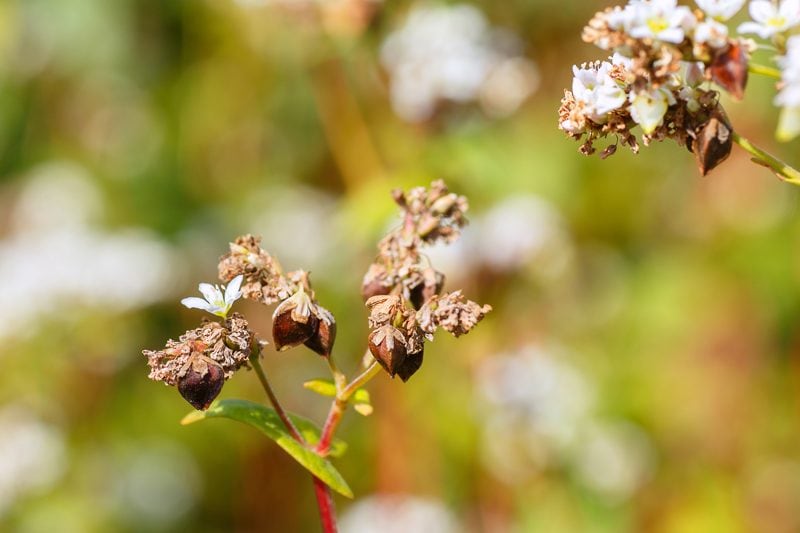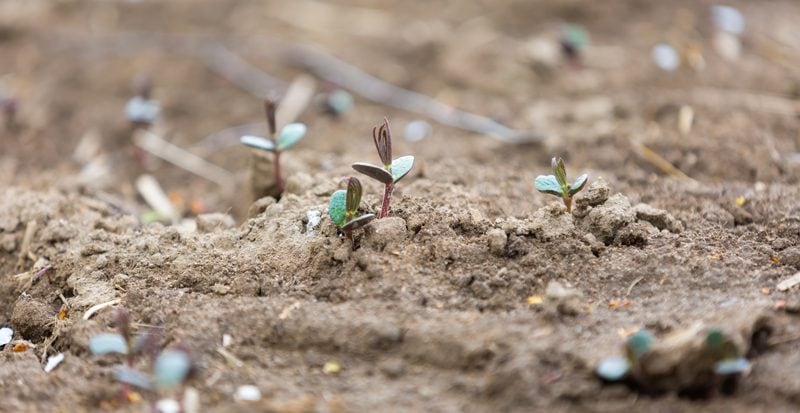


 Add to favorites
Add to favorites
The first time I learned about buckwheat was when my mom made my dad a buckwheat-filled pillow. If my memory serves me right, that was about twenty years ago, and he still uses them! As a long-haul truck driver, he never leaves home without it. He said that he loves it because it conforms perfectly to his head and neck providing cool, comfortable support. Can’t argue with that. But there’s more to buckwheat than just pillow making…

Once I entered the raw food lifestyle, buckwheat became a staple in our home. I always soak and sprout it before consuming, but I first had to really understand what this pillow-stuffing-superfood was. It is neither a grain nor a cereal, and it is gluten-free. So, where does it come from? Buckwheat is derived from the seeds of a flowering plant. It is similar to the sunflower seed, with a single seed inside a hard outer hull.
Let’s remove some confusion… Toasted buckwheat is referred to as kasha. If you are looking for raw buckwheat groats, you’ll want to avoid kasha. You can always tell by the color and the aroma. Kasha is a darker reddish-brown color and has a strong nutty, toasted scent to it. Raw buckwheat groats are light brown or green and don’t have much of an aroma at all.

See the buckwheat attached to the wilting flower head?
Certain parts of the Northeast are suited to grow buckwheat. These are places where the summer evenings are cool, but frost comes relatively late in the fall. These areas are at higher elevations in New York, Pennsylvania, Maryland, and West Virginia. There are also functional areas near Lake Erie, Lake Ontario, and the Finger Lakes in New York, Pennsylvania, Ohio, and Ontario. Finally, there are cool regions in Maine that are well-suited.
There are commercial growers for buckwheat, but it can also be grown by the novice gardener… and for a good reason. Buckwheat plants help deter unwanted pests, and at the same time, it attracts useful insects, such as a honeybee. Some people will grow buckwheat around the edges of their garden to create a pest-free zone for their up and coming produce.
If you’re organized about it, you can collect the seeds to control where it pops up next. Or you can be casual about it and let Mother Nature do her thing and just let the seeds fall. Another beauty of buckwheat is that it is economical to produce because it requires no pesticides and few herbicides.

Buckwheat is used as a cover crop (a crop grown for the protection and enrichment of the soil) or a rotational crop because it can even grow in poor soil. It also is often used to prepare organic crop soil because it can eliminate weeds. It can add up to 3,000 pounds of organic matter per acre back into the soil when tilled.
It is a summer annual that is easily killed by frost. Buckwheat establishes rapidly and as easily. Its rounded pyramid-shaped seeds germinate in just three to five days. The leaves develop within only two weeks, creating a soil shading canopy filled with white flowers. These flowers are self-sterile, and as a result, must be cross-fertilized by insects or the wind for seed set to occur. It typically produces two to three tons of dry matter per acre within just six to eight weeks. The residue decomposes quickly, releasing nutrients to the next crop.
Culinary Uses
Upholstery Filling
Support for Bee Colonies.
Livestock and Poultry Feed
In Raw Food Recipe Application